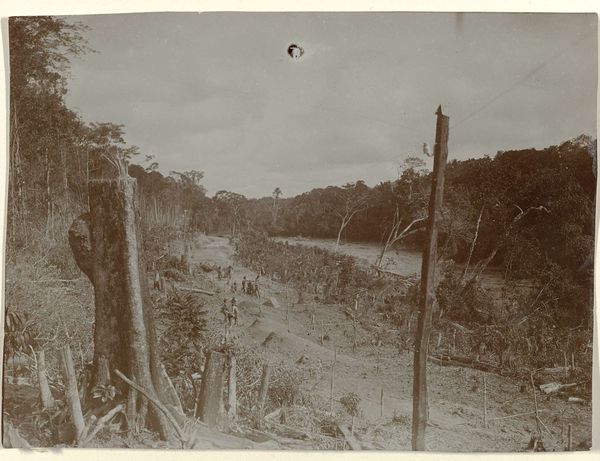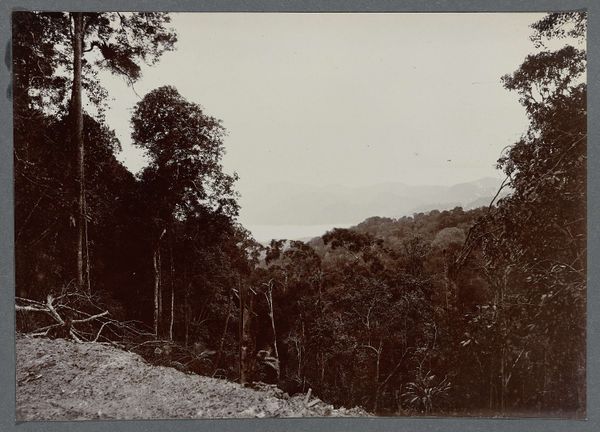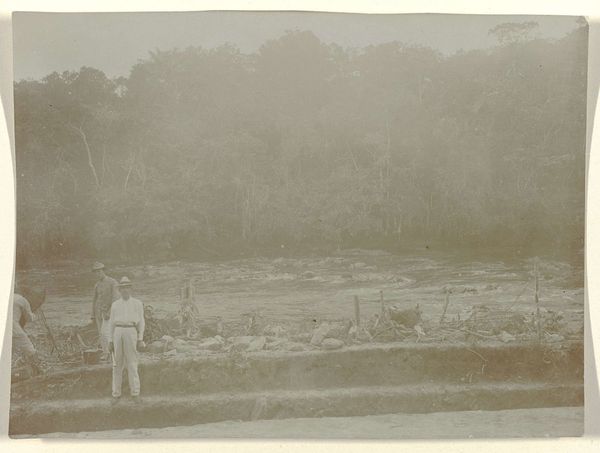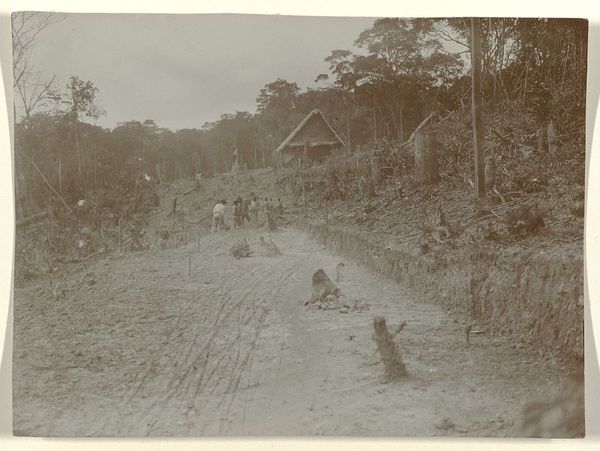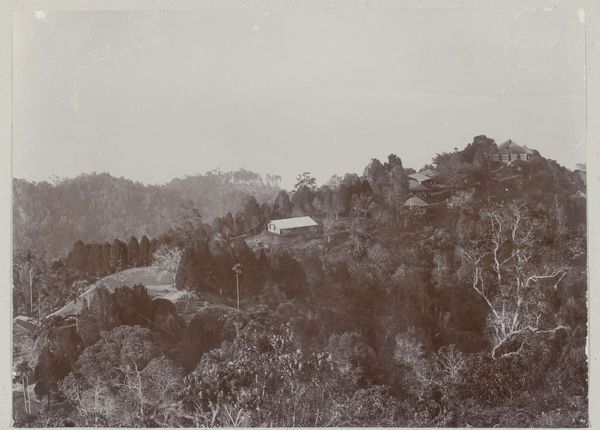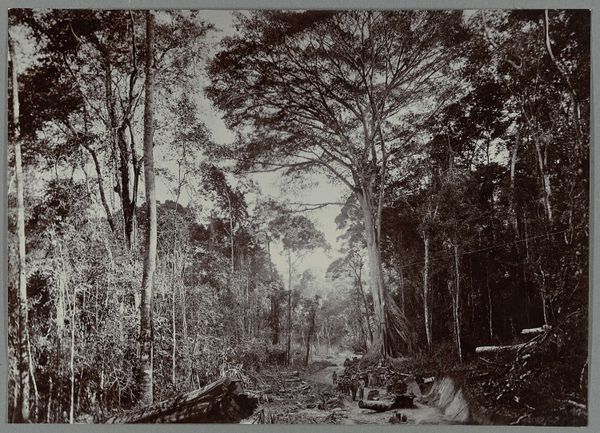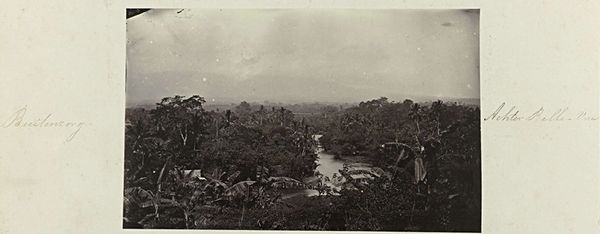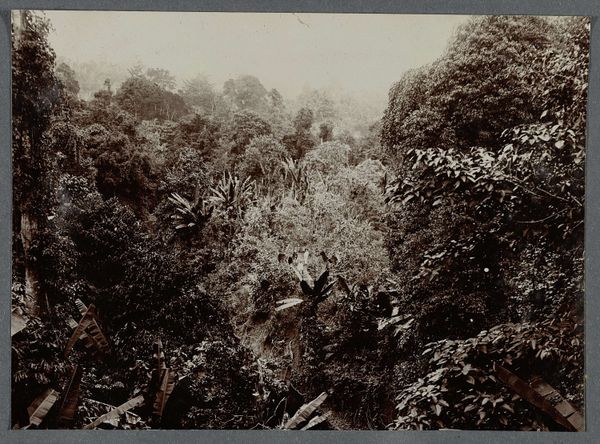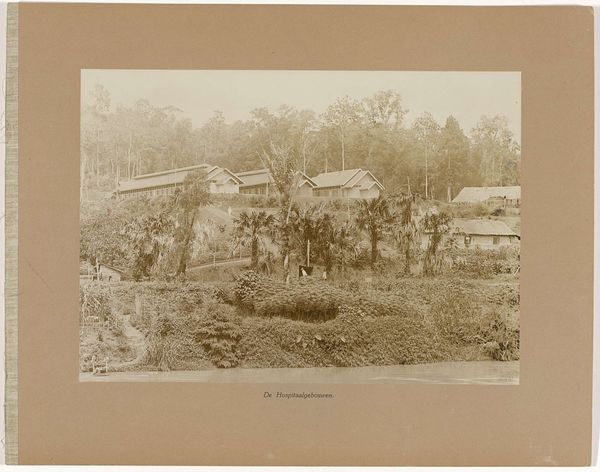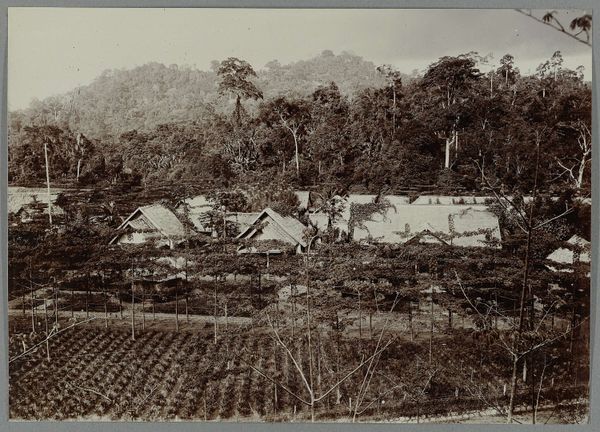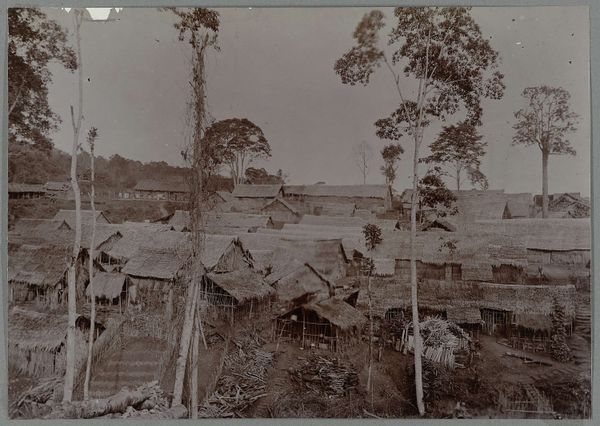
photography, gelatin-silver-print
#
excavation photography
#
landscape
#
photography
#
gelatin-silver-print
Dimensions: height 85 mm, width 114 mm
Copyright: Rijks Museum: Open Domain
Editor: Here we have Jacob Evert Wesenhagen’s "Aanleg van de spoorweg bij Dam, Suriname," a photograph, or possibly even a photomontage, created sometime between 1905 and 1910. It’s currently residing here at the Rijksmuseum. I'm immediately struck by the somber mood and the sense of…disruption. What do you see in this piece? Curator: Ah, disruption is a fantastic word for it. Look how the untamed jungle is wrestled into submission. I imagine the intense heat and humidity, the cacophony of insects and the sheer brute force needed for this task. Can you feel that contrast? This image…it whispers of ambition, but also loss, doesn't it? This wasn’t just about building a railway; it was about reshaping a world. A new world violently intruding on an old one. A question: Do you think Wesenhagen romanticizes this ‘progress,’ or does the subdued palette betray a different feeling altogether? Editor: I hadn't considered the romanticization angle. The gray tones definitely lean towards a sense of unease. Maybe a kind of...resigned acceptance of the inevitable? It also reminds me that, despite appearing almost devoid of people, someone was behind the camera witnessing all of this! Curator: Exactly! And their gaze, their choices, shape our understanding even now. Think about what they chose to include, to leave out. It makes you wonder about the indigenous perspective. This photo invites us to think about not just what happened, but *who* controlled the narrative and whose stories were untold in the process of such massive environmental projects. How are photographs used to push one reality versus another? Editor: This has really opened my eyes. I was focused on the visual aspect, but you've brought in this whole layer of the human impact and perspective which makes the photo come alive. It's almost like looking through a new lens. Curator: Wonderful. Sometimes, the most powerful art quietly provokes you into reimagining familiar history. Perhaps that is part of what it's about? We make history anew by how we choose to tell it.
Comments
No comments
Be the first to comment and join the conversation on the ultimate creative platform.
